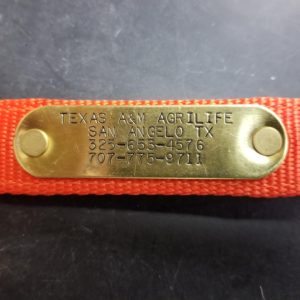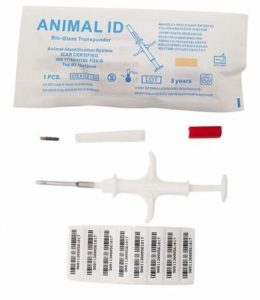Summer is in full swing with lots of hot days and little rain this year. Many producers are reducing their herds to have feed resources available for the stock they keep. Now would also be a good time to do some health checks and body condition scores of your LGDs. Dogs have a body condition scoring system like livestock. However, instead of five levels, dogs have nine levels of condition scoring. Ideally, LGDs should be kept in a 4 to 5 body condition score (BCS). If your dogs are lower than a level four or five, make sure to deworm them and provide them with some extra kibble to regain any lost condition. Dogs with scores in a 1 ½ or 2 BCS range should be examined by a veterinarian for health reasons and possibly kenneled for a couple months until they regain proper weight.
AgriLife Livestock Guardian Dog Program: Events and Update
The Texas LGD Association will be holding its first annual membership meeting on August 20 at 1p.m. at the First Community Spur Arena in San Angelo. The organization will also have a table at the AgriLife Sheep and Goat Expo that is being held in San Angelo on August 19 and 20. If you haven’t joined the organization, you can log onto their website to fill out an application and pay your dues through PayPal. For more information about the annual meeting or the organization you can email me at bill.costanzo@ag.tamu.edu.
The AgriLife Center will be hosting its 49th Annual Sheep & Goat Field Day on August 19. We will give updates on a variety of projects going on at the Center in addition to an update on the LGD bonding project. The AgriLife Sheep & Goat Expo is also happening that afternoon at the Spur Arena in San Angelo and will conclude on August 20. Make sure to register for that event on our website.
LGD Identification
Livestock guardian dogs take a tremendous amount of time and money to train. In addition to those costs, dogs that are missing and not
found may cause a loss of production for the producer’s herd as well. Some producers choose not to identify their LGDs with collars or ID microchips because of the cost or they fear that the dogs may get hung up on vegetation and brush. We have not had this issue with any of our dogs. We believe that it’s important to provide a couple different methods of identification for our dogs. All AgriLife LGDs have a collar with a name plate listing our contact information, are implanted with an ID chip and have photos taken of them regularly. Many of our dogs also wear GPS trackers.
I would encourage all producers to use at least a good quality leather or nylon collar with a name plate so that dogs can be returned should they leave the ranch boundaries. A name plate should list the producers name, city, state and phone number. If there’s extra room, you should add the dog’s name too. It may be helpful for the vet or animal shelter to know your dog’s name to help care for it until you are notified and can retrieve your LGD.
ID chips are also affordable and can be purchased online or at your local veterinarian. They are an easy way to prove ownership should your dog be stolen or purposely removed from your property. The chip should be implanted in the loose skin on the dog’s neck. There are several different companies online that you can register your ID chip with, and some are even free. If your LGD is found and taken to a vet or local animal shelter they will scan the dog to see if it has an ID chip and then contact the owner. It’s important to update your ID chip company with your current contact information if you move or change phone numbers so that your correct information is always on file with the registry. We use Free Pet Chip Registry to register the ID chips for all of our dogs. It’s very easy to use and you can easily transfer information should you sell a dog.

ID pictures of two AgriLife dogs. Distinctive markings in the face of Doc (left) and on Betty’s side (right) can be seen in the photos. (Texas A&M AgriLife photo courtesy Costanzo 2022)
Having current pictures of your LGDs is also helpful to try and locate a dog that has gone missing. Make sure to have pictures of each side of the dog, its face and any other distinguishing marks it may have. You can store these pictures in a cloud server such as Google Drive, One Drive or Drop Box so that you can easily access them from your cell phone to send to neighbors, veterinarian offices and animal shelters if your dog is missing.
LGDs & The Bonding Project Update
Round Four Pups
The pups are continuing to do well in the feeding trial and will be headed to the vet’s office in early August to get spayed and neutered. It’s important to spay or neuter your LGDs to keep unwanted litters from appearing. Some LGD breeds mature faster than others and young females may come into heat before a year of age. Make sure to watch their development as they near this age to prevent an unwanted litter.
LGDs should be fully mature before being bred. Young dogs are not proven guardians, and they are still developing structurally which are both reasons not to breed a female too early. Pregnancy in younger females can lead to poor structural development as critical nutrients for her growth are transferred to the growing puppies. In addition, females with litters will not be as attentive to livestock while her puppies are maturing. Once she weans her pups at approximately 8 weeks of age, she will begin to leave them to return to guarding livestock for short periods of time.
Adult Dogs
Doc was diagnosed with Ehrlichiosis just a few days after Thelma had finished her round of antibiotics and was returned to the invisible fence pasture. Thelma was returned to the ranch in Menard in early July. Doc was kenneled for most of July and was returned to the ranch in Menard at the end of the month. We discovered that Thelma was not gaining weight after being at the ranch for a few weeks and she was returned to the Center to be rechecked for the tick disease. She was placed on a second round of antibiotics as our vet felt that she had not fully recovered from Ehrlichiosis. She will be in the kennel at the Center for another month while she is treated again. Hopefully she will put some weight back on and fully recover this time from the disease.
In Closing
If you enjoyed this monthly LGD blog, please don’t forget to subscribe to it with this link The Guardian Way | Texas A&M AgriLife Research and Extension Center at San Angelo.
To provide feedback on this article or request topics for future articles, please contact me at bill.costanzo@ag.tamu.edu or 325-657-7311.
The Texas A&M AgriLife Livestock Guardian Dog Program is a cooperative effort by Texas A&M AgriLife Research and the Texas Sheep and Goat Predator Management Board. Make sure to follow us on our social media sites and share them with your friends and family!
Facebook: https://www.facebook.com/TAMUlivestockguarddog/
Instagram: @tamulivestockguarddog
YouTube: https://www.youtube.com/channel/UCF7YbP6bNDV7___6H8mifBA
 Don’t forget to check out the Texas LGD Association on online! Follow the organization at https://www.facebook.com/TexasLGDAssociation or check out their website!
Don’t forget to check out the Texas LGD Association on online! Follow the organization at https://www.facebook.com/TexasLGDAssociation or check out their website!






